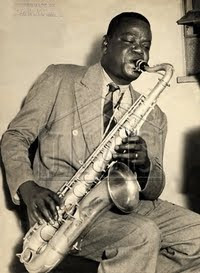Henrique Cazes - Cavaquinho Virtuoso
 The cavaquinho is an instrument of Portuguese origin, and is the highest-pitched member of the flat-bodied European guitar family. It came to Brazil as it came to other countries colonized by the Portuguese, and traveled as far as Portugal's commercial trading posts in Hawaii (where it transformed into the ukulele) and Indonesia. In Brazil the cavaquinho played a key part on the birth and development of urban popular music since the middle of the XIX century, both in the instrumental lineage that led to Choro, and in the vocal one that led to samba. It was in Brazil that the instrument reached its highest degree of development thanks to musicians such as Nelson Alves (1895/1960), Canhoto (Waldiro Frederico Tramontano 1908/1987) and Waldir Azevedo (1923/1980), who made the cavaquinho an immensely popular solo instrument.
The cavaquinho is an instrument of Portuguese origin, and is the highest-pitched member of the flat-bodied European guitar family. It came to Brazil as it came to other countries colonized by the Portuguese, and traveled as far as Portugal's commercial trading posts in Hawaii (where it transformed into the ukulele) and Indonesia. In Brazil the cavaquinho played a key part on the birth and development of urban popular music since the middle of the XIX century, both in the instrumental lineage that led to Choro, and in the vocal one that led to samba. It was in Brazil that the instrument reached its highest degree of development thanks to musicians such as Nelson Alves (1895/1960), Canhoto (Waldiro Frederico Tramontano 1908/1987) and Waldir Azevedo (1923/1980), who made the cavaquinho an immensely popular solo instrument.
A contemporary Brazilian master of the cavaquinho is Henrique Cazes (b 1959) from Rio de Jainero. The above and following info is quoted from his official website (click headline):
Born in a family of amateur musicians (his father was a guitarist and composer; his mother a singer), he started to play the guitar when he was six years old. He gradually went on to play cavaquinho (a four-string soprano guitar similar to the ukulele), mandolin, tenor guitar, banjo, twelve-string "caipira" guitar and lately the electric guitar - all self taught.
His professional debut came in 1976, with Coisas Nossas (Our Stuff), an ensemble that reveled in Brazilian music of the 20s and 30s. In 1980 he joined Camerata Carioca, where he worked together with two musicians who influenced him enormously: mandolinist Joel Nascimento and famed composer Radamés Gnattali. With the Camerata Henrique recorded the albums "Vivaldi & Pixinguinha" (FUNARTE 1982) and "Tocar" (Polygram 1983). Working regularly with singers Nara Leão and Elizeth Cardoso, Camerata traveled all over the country and toured Japan in 1985.
In 1988, Henrique started his career as a cavaquinho soloist, recording his first LP "Henrique Cazes" (Musicazes). The same year he published the instructional book "Modern School of Cavaquinho" (Lumiar Editora), which is still the most respected music book on the instrument. Still as a soloist, he released "Tocando Waldir Azevedo" (Kuarup 1990), "Waldir Azevedo, Pixinguinha, Hermeto & Cia" (Kuarup 1992), "Desde que o Choro é Choro" (Kuarup 1995) and "Relendo Waldir Azevedo" (RGE 1997). In 1997 he wrote the book "Choro, do Quintal ao Municipal" (Editora 34), a history of the 150 years of Choro music.
He founded and leads the Orquestra Pixinguinha, which since 1988 has performed and recorded Pixinguinha's original arrangements, with CDs also released in Europe and Japan. Considered the best cavaquinho soloist today and certainly one of the most active, Henrique Cazes developed a parallel career as record producer (with numerous record awards), in addition to his work as a composer of film, theater and television soundtracks.
---
Additional info on Henrique Cazes available at his website regarding the various musical projects he has directed and an extensive discography - the website is in both Portuguese and English.
To give you and impression of Henrique Cazes' virtuosic mastering of the solo cavaquinho, I insert two video fragments from YouTube. - The first is a solo performance of a composition by Waldir Azevedo "Minhas Mãos meu Cavaquinho"
The secound video fragment features Henrique Cazes playing his own "Estudo Nº1"
Jo



0 Comments:
Post a Comment
<< Home